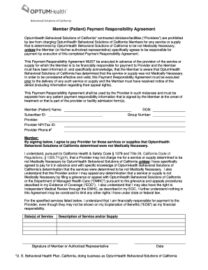
The process of the post-closing trial balance is similar to the adjusted trial balance with a few changes. We cannot shrug off the fact that the purpose of having a trial balance in accounting is truly inevitable. With the help of both the adjusted and unadjusted type of trial balance, the work of a bookkeeper or an accountant become less burdensome. An adjusted trial balance can also refer to a trial balance where the account balances are adjusted by the external auditors. Presentation differences are most noticeable between the two forms of GAAP in the Balance Sheet. Under US GAAP there is no specific requirement on how accounts should be presented.
IFRS requires that accounts be classified into current and noncurrent categories for both assets and liabilities, but no specific presentation format is required. Thus, for US companies, the first category always seen on a Balance Sheet is Current Assets, and the first account balance reported is cash. The accounts of a Balance Sheet using IFRS might appear as shown here. Looking at the asset section of the balance sheet, Accumulated Depreciation–Equipment is included as a contra asset account to equipment. The accumulated depreciation ($75) is taken away from the original cost of the equipment ($3,500) to show the book value of equipment ($3,425). The accounting equation is balanced, as shown on the balance sheet, because total assets equal $29,965 as do the total liabilities and stockholders’ equity.
That is because they just started business this month and have no beginning retained earnings balance. Take a couple of minutes and fill in the income statement and balance sheet columns. The next step is to record information in the adjusted trial balance columns. Once the trial balance information is on the worksheet, the next step is to fill in the adjusting information from the posted adjusted journal entries. There is a worksheet approach a company may use to make sure end-of-period adjustments translate to the correct financial statements. Ending retained earnings information is taken from the statement of retained earnings, and asset, liability, and common stock information is taken from the adjusted trial balance as follows.
How to start an IT consulting business in 7 steps
Simply put, a trial balance adjusted for all accounts is called an adjusted trial balance. These two statements are sometimes required to print out along with the financial statements and sometimes not. The general ledger contains the detailed transactions comprising all accounts, while the trial balance only contains the ending balance in each of those accounts.
Assessment of Cardiac Energy Metabolism, Function, and … – AHA Journals
Assessment of Cardiac Energy Metabolism, Function, and ….
Posted: Tue, 18 Apr 2023 07:00:00 GMT [source]
The adjusted trial balance is an internal report that serves two purposes, though it is not part of the financial statements. Find an example balance sheet and use our free balance sheet template to review your company’s financial position. The differences between an unadjusted trial balance and an adjusted trial balance are the amounts in the adjusting entries. To get the numbers in these columns, you take the number in the trial balance column and add or subtract any number found in the adjustment column.
Quick Points of Differences Between Trial Balance and an Adjusted Trial Balance
Remember that adding debits and credits is like adding positive and negative numbers. This means the $600 debit is subtracted from the $4,000 credit to get a credit balance of $3,400 that is translated to the adjusted trial balance column. In order to prepare a trial balance at any time, it is necessary to determine the balance on each account. This process is known as ‘balancing off’ the general ledger accounts. The trial balance can then be prepared by listing each closing balance from the general ledger accounts as either a debit or a credit balance.

Here are a few similarities between the adjusted and post-closing trial balances. Temporary ledger accounts are recurring accounts that start and end with zero balances for every accounting cycle. The foremost and important factor for adjusted trial balance is to ensure all recorded journal entries are accurately recorded. After incorporating the adjusting entries, following adjusted trial balance is prepared.
Understanding The Adjusted Trial Balance
The following is the Statement of Retained Earnings for Printing Plus. An adjusted trial balance is a listing of the ending balances in all accounts after adjusting entries have been prepared. The remaining balance of all temporary accounts is carried forward to the next accounting period. An adjusted trial balance can be prepared several times before finalization to incorporate adjustments at different stages of the account and audit finalization. It’s time to make adjusting entries once you’ve double-checked that you’ve properly entered your debit and credit entries transactions and that the account totals are right.
- This balance is transferred to the Cash account in the debit column on the unadjusted trial balance.
- Let’s use the example from chapter adjusting entries and prepare unadjusted and adjusted trial balances.
- An income statement shows the organization’s financial performance for a given period of time.
- According to J.R Batliboi, “A trial balance is a statement, prepared with the debit and credit balances of the ledger accounts to test the arithmetical accuracy of the books.”
- A trial balance contains all the accounts in the ledger of a certain business.
Adjusted trial balance is an advanced form of the commonly used trial balance statement. If you work for a company, you may be allowed to deposit the funds into a retained profits account, which is a permanent account that holds money that your company hasn’t spent paycheck calculator pa adp in past accounting cycles. If you use accounting software, it may automatically submit these closing items at the conclusion of your accounting cycle. Your unadjusted trial balance becomes an adjusted trial balance after you apply all of these adjusting items.
How to cut the cost on your financial transactions
At this stage, any errors in recording and posting journal entries in relevant ledger accounts are highlighted and rectified. The main difference between an unadjusted and adjusted trial balance is when they are created. The trial balance plays a crucial role in the creation of financial statements. A trial balance is an accounting statement that aggregates all ledger balances into equal debit and credit account column totals. A trial balance is prepared by a firm on a regular basis, generally at the conclusion of each reporting period.
This balance is transferred to the Cash account in the debit column on the unadjusted trial balance. Accounts Payable ($500), Unearned Revenue ($4,000), Common Stock ($20,000) and Service Revenue ($9,500) all have credit final balances in their T-accounts. These credit balances would transfer to the credit column on the unadjusted trial balance. A trial balance includes a list of all general ledger account totals . Each account should include an account number, description of the account, and its final debit/credit balance.
The balance sheet is classifying the accounts by type of accounts, assets and contra assets, liabilities, and equity. Even though they are the same numbers in the accounts, the totals on the worksheet and the totals on the balance sheet will be different because of the different presentation methods. The statement of retained earnings (which is often a component of the statement of stockholders’ equity) shows how the equity (or value) of the organization has changed over a period of time. The statement of retained earnings is prepared second to determine the ending retained earnings balance for the period. The statement of retained earnings is prepared before the balance sheet because the ending retained earnings amount is a required element of the balance sheet.
Unadjusted and adjusted trial balances are two important financial reports used in accounting and bookkeeping. The unadjusted trial balance is created before any adjusting entries have been made and the adjusted trial balance is created after all of the adjusting entries have been made. Both reports are used to verify that the debits and credits in the ledger are equal and to identify any errors that have been made.
Which patients with metastatic hormone-sensitive prostate cancer … – The Lancet
Which patients with metastatic hormone-sensitive prostate cancer ….
Posted: Mon, 03 Jul 2023 22:33:54 GMT [source]
Once all balances are transferred to the unadjusted trial balance, we will sum each of the debit and credit columns. The debit and credit columns both total $34,000, which means they are equal and in balance. However, just because the column totals are equal and in balance, we are still not guaranteed that a mistake is not present. In short, a ledger is an account wise summary of all monetary transactions, whereas a trial balance is the debit and credit balance of such ledger accounts. Traditionally a ledger was prepared in a physical book with a separate page for each account and a trial balance was derived from these accounts. To post a journal entry means to transfer that entry to the general ledger.
An adjusted trial balance is a report created after all of the adjusting entries have been made. It is created at the end of the accounting period and lists all accounts and their adjusted balances. The adjusted trial balance includes all of the transactions that have been posted to the ledger, as well as any adjusting entries that need to be made. It is a trial balance which is prepared or extracted from the accounting system prior to posting any adjusting entries. Purpose of this preliminary trial balance is to go through all the account balance and evaluate whether any adjustments are required in the books of account.
One more step…
You may confirm that you re-entered each modification appropriately by performing these calculations. If your totals don’t match, go back through your adjustments and rectify any changes you only entered once. You can make the changes once you’ve finished your unadjusted trial balance.
If a company creates financial statements on a monthly basis, the accountant would print an unadjusted trial balance at the end of each month to initiate the process of creating financial statements. Alternatively, if the company only creates financial statements once a quarter, one would print the unadjusted trial balance on a quarterly basis. Trial balance normally lists down all closing account balances in debit and credit depending on the nature of accounts. For example, assets are posted in debit, and liabilities are posted on the credit side of the trial balance. The second difference we might consider is that the unadjusted trial balance is usually used before all the journal entries were entered. Meanwhile, an adjusted trial balance is one wherein all the necessary adjustments of the journal entries were already made so that there is a balance between the two sides – the credit and the debit.
There is no adjustment in the adjustment columns, so the Cash balance from the unadjusted balance column is transferred over to the adjusted trial balance columns at $24,800. Interest Receivable did not exist in the trial balance information, so the balance in the adjustment column of $140 is transferred over to the adjusted trial balance column. The adjustments total of $2,415 balances in the debit and credit columns. Total expenses are subtracted from total revenues to get a net income of $4,665. If total expenses were more than total revenues, Printing Plus would have a net loss rather than a net income. This net income figure is used to prepare the statement of retained earnings.
The post-closing trial balance will include assets, liabilities, and equity accounts that are permanent and have a non-zero balance at the closing date of an accounting period. First, it requires a preparer to include all account balances for the current accounting period only. Transactions taking place after the accounting period closing date should be carried forward to the next accounting cycle.
